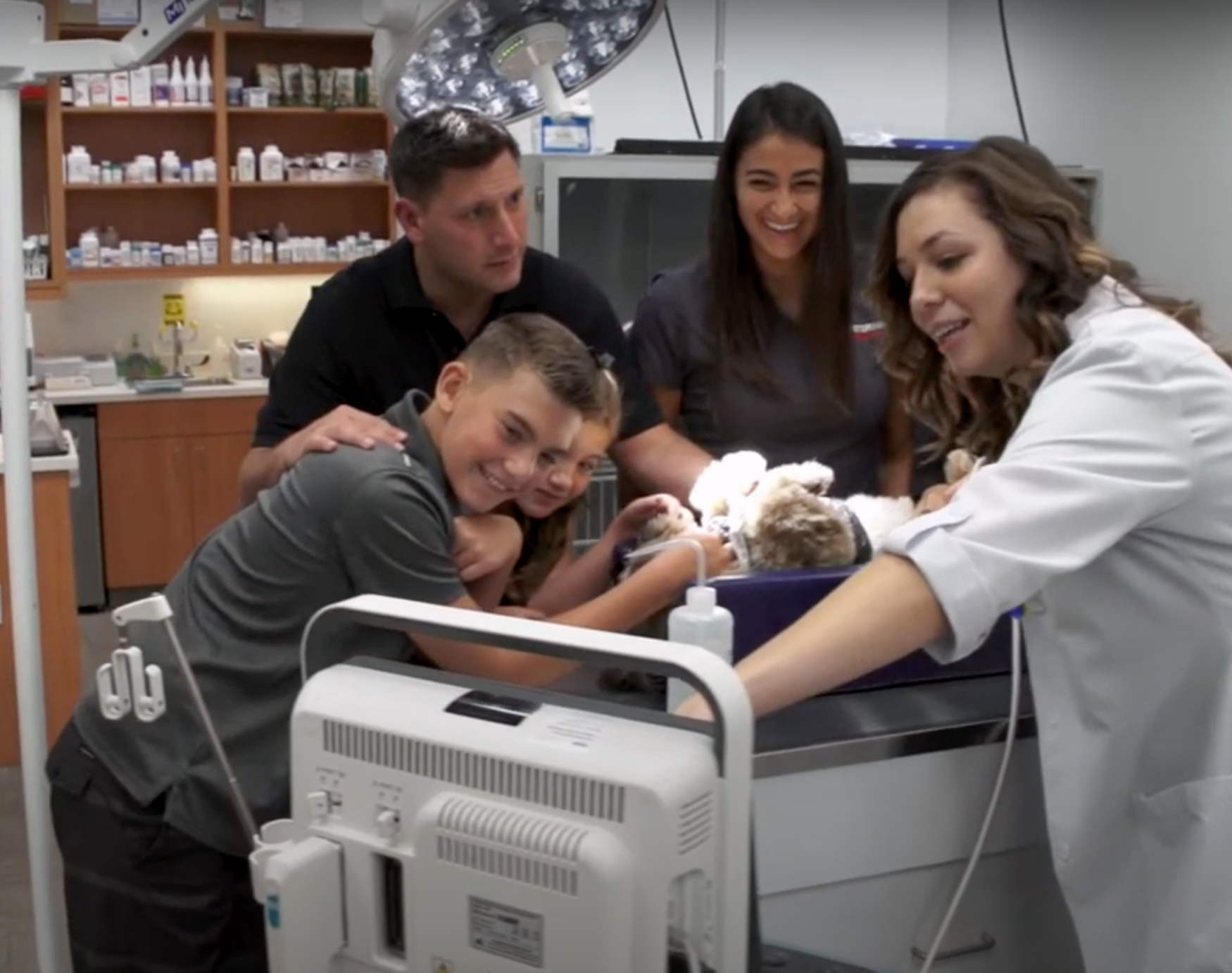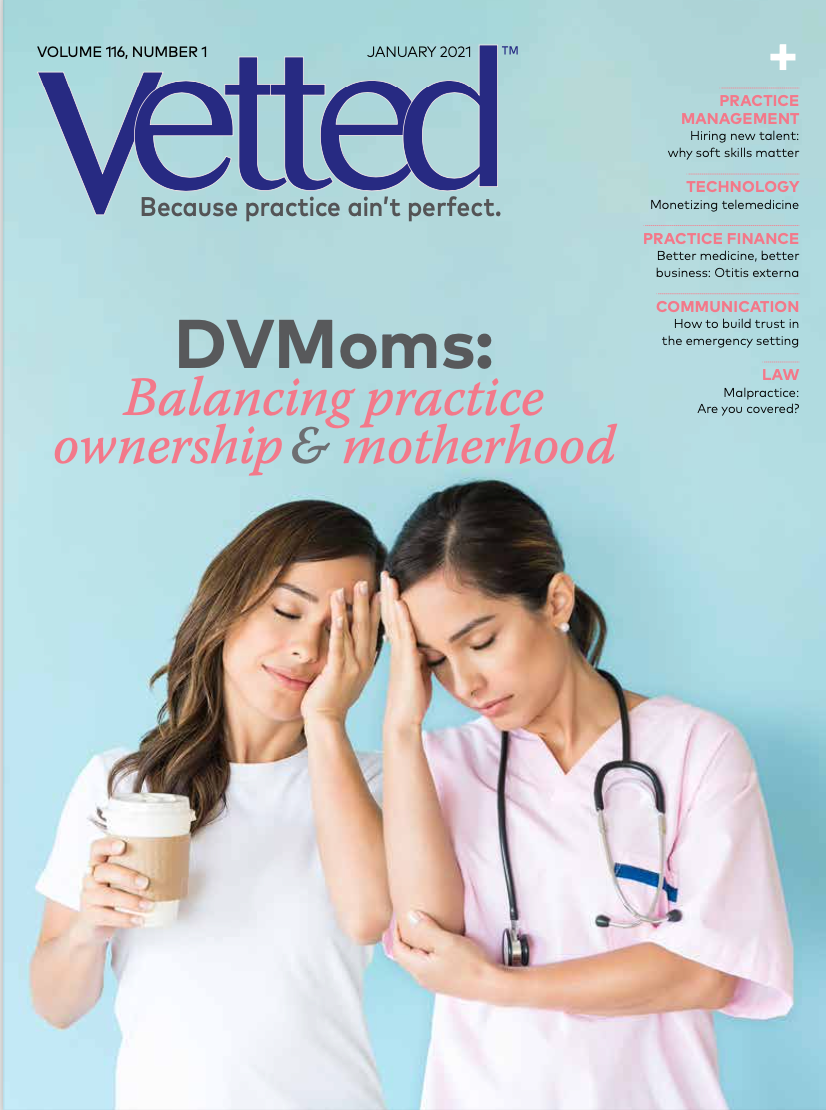How to build trust in the emergency setting
Know how to communicate with and comfort clients, especially during critical moments, when you are not the primary veterinarian.
As an emergency veterinarian, Monica Sterk, DVM, (right) says building trust with her clients is pivotal.

Every day in veterinary hospitals around the world, decisions are made based on 1 major factor: trust. Clients agree to protect their pets with recommended vaccines at specific times because of the longstanding trust they have in their pet’s doctor. They trust their veterinarian’s diagnostic and treatment recommendations when their pet is sick, because they have known their pet since it was young. But when their pet has an emergency at 2 am, it’s not their primary veterinarian they see. What is it that makes or breaks a pet owner’s trust with the emergency room veterinarian?
In my experience as an emergency veterinarian, I have found that trust is pivotal. I have to gain the client’s trust quickly, so they can make difficult decisions based on my findings and guidance. I am fortunate enough to work for a practice that allows clients to remain with their pets throughout the entire visit, so communication is established from the moment they walk through the door. Their confidence in my recommendations is key to not only the well-being of the pet, but also the budding relationship with that new client.
Introduce yourself.
Don’t skimp on your introduction, no matter what. When animals are rushed into the hospital, our brains immediately start evaluating the problem. Instead, take the 2 seconds to say, “Hi, I’m Dr Sterk,” before asking what happened or advising your team on next steps. It may seem unrealistic to expect the client to remember your name during a stressful situation, but share it anyway to offer personal insight about whom the client should place their trust in. They want to know who you are and how to address you.
Be relatable.
It seems simple, but this is generally an underused tool when building a relationship. Share your own story to connect with clients, not as a doctor but as a fellow animal lover. For example, tell your client that your dog is also a picky eater or that you also struggle to pill your cat when it is sick. Offering a glimpse into your own life will help you connect with clients on a deeper level. It is also likely to reduce their anxiety somewhat.
Say it like it is.
Lack of trust stems from miscommunication and misunderstanding, so be transparent with clients. Explain exactly what is happening with their pet and why. Describe each step of what you are doing and what you are trying to accomplish. It is crucial that clients understand you are all on the same team and that you want them to understand your decision-making process. For instance, if you are performing a quick ultrasound, share with the client what you are looking for and what you find. Communicating this information puts the client on the same page as you, and will quickly result in a trusting relationship.
Admit you are not their primary veterinarian.
I do it all the time. “I know that I’ve never met Fluffy and I am not there for his monthly allergy injections, but I truly have Fluffy’s best interests in mind.” At times, clients may feel a need to hide their concerns, so it’s up to you to address them. There is nothing wrong with explaining that although you just met, you want the best for them and their pet.
Build relationships with local veterinarians.
What better way to kickstart a relationship than by having a mutual friend?I make it my business to know the primary veterinarians in my hospital’s local area and develop a relationship with them. It may be irrelevant in an emergency situation, but when the client is used to seeing a certain doctor, it helps if you can share your relationship with that doctor as well. After all, we all share the same goal of providing excellent pet health care.
Use common terms.
People without a medical background are not likely to know what hemangiosarcoma or leukocytosis is. Everyone understands that you’re the doctor and you know those words, but be cognizant that most of your clients won’t. So, use medical terminology but also use layman’s terms so everyone is on common ground. I promise you that if they have a medical background, they will quickly tell you.
Put yourself in their shoes.
This isn’t new advice, but it’s important. If I were a client, I would be the one being viewed as “overreacting.” I would be over the top in my disposition and concern, but wouldn’t you? Sometimes we forget that we might react in the same manner if our pet were having an emergency. Showing clients empathy will not go unnoticed and will absolutely lead to the trust we seek.
The bottom line
Earning trust begins with empathy and compassion and ends with a lasting and confident relationship. Achieving trust may be a challenge, but it’s crucial during an emergency. All the knowledge in the world often does not make up for a lack of trust between client and doctor. So, remembering these simple building blocks will lead to a successful relationship during an emergency visit.
Monica Sterk, DVM, practices at Veterinary Emergency Group in Nanuet, New York.
